
| (formerly known as Cryptolechia effractella) DEPRESSARIINAE, GELECHIOIDEA | (donherbisonevans@yahoo.com) and Stella Crossley |
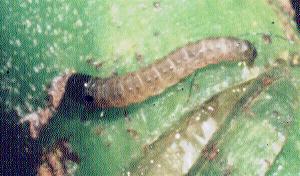
early instar
(Specimen: courtesy of
Fred Swindley)

| (formerly known as Cryptolechia effractella) DEPRESSARIINAE, GELECHIOIDEA | (donherbisonevans@yahoo.com) and Stella Crossley |

early instar
(Specimen: courtesy of
Fred Swindley)
This Caterpillar is initially pale brown with a dark brown head, prothorax, true legs and tail.
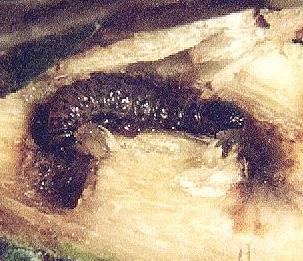
Later the caterpillar becomes brown, and develops rows of dark brown tubercles along the back, and has a flattened abdomen towards the tail.
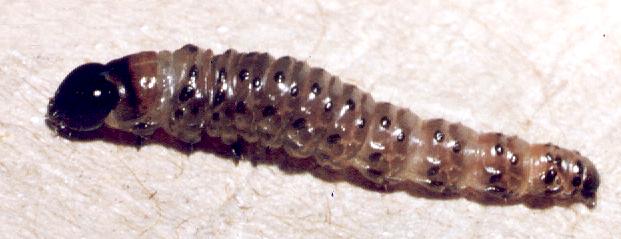
It bores into and feeds inside the growing shoots of trees in STERCULIACEAE including:
although it has also been known to attack:

The plant appears to respond by secreting a gelatinous sap to heal the wound, but the caterpillar collects this inside its borehole, rolls it into little round beads, and deposits them at the entrance to its borehole, together with frass.
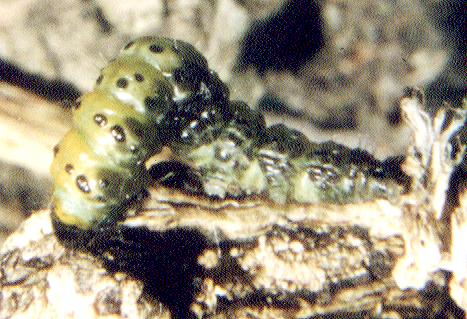
The caterpillar pupates without a cocoon on the outside of the stem. The pupa is camouflaged in various shades of brown. It stands on its tail, but it is very curved. When disturbed, the pupa curls down to nearly touch the substrate, and then flicks back up again.
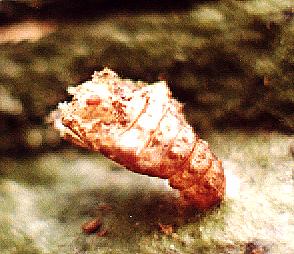
The adult moth has wings which look as though a semi-circular piece has been taken out of the costa. It also has raised areas on the wings of loose scales.
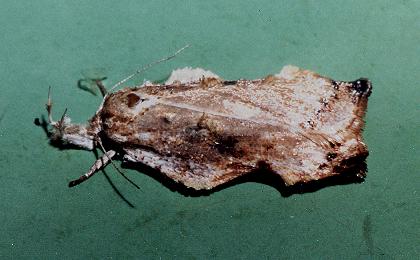
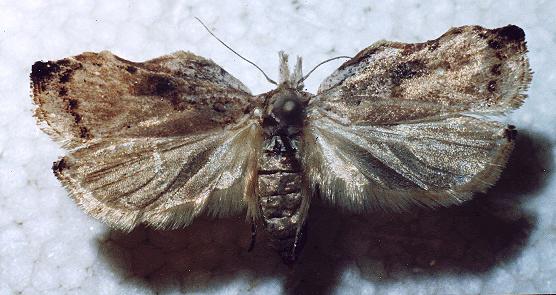
Female
(Specimen: courtesy of
Fred Swindley)
The males are smaller than the females. The males have a wingspan of about 2 cms. The females have a wing span of about 2.5 cms. The male that we raised was nearly white, and the female fawn coloured. Both had a little black mark on the tip of each forewing. They both rest with its long mouth parts extended out in front of the head.

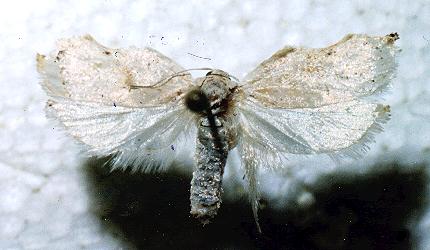
Male
(Specimen: courtesy of
Fred Swindley)
The irregular shape makes a very effective camouflage on the irregular bark and stems of the food plant.
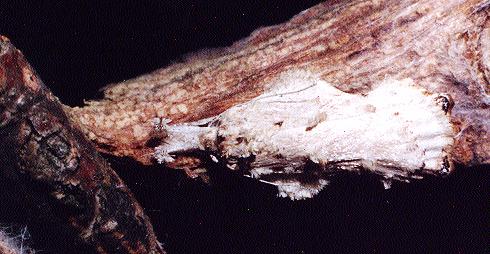
Our specimens were obtained from a tree in West Ryde, Sydney. The Cockatoos were very active in this tree, tearing the twigs apart. We suspect this damage was to get to the Tonica larvae inside.
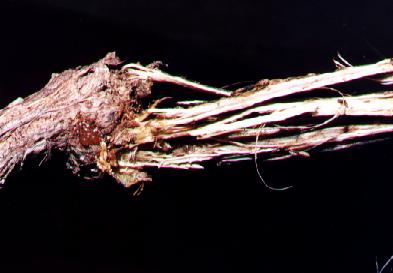
The species has been found in

Further reading :
Ian F.B. Common,
Moths of Australia,
Melbourne University Press, 1990, fig. 24.5, p. 239.
Peter Hendry,
You Asked,
Butterflies and Other Invertebrates Club,
Metamorphosis Australia,
Issue 74 (September 2014), pp. 31-34.
Edward Meyrick,
Descriptions of Australian Lepidoptera. Part I,
Transactions of the Royal Society of South Australia,
Volume 26 (1902), p. 164.
Pieter Cornelius Tobias Snellen,
Nieuwe Exotische Tineinen,
Tijdschrift voor Entomologie,
Volume 21 (1878), pp. 139-142, and also
Plate 7, figs. 17-25.
Paul Zborowski and Ted Edwards,
A Guide to Australian Moths,
CSIRO Publishing, 2007, p. 80.
 caterpillar |  butterflies |  Lepidoptera |  moths |  caterpillar |
(updated 4 February 2008, 8 February 2025)